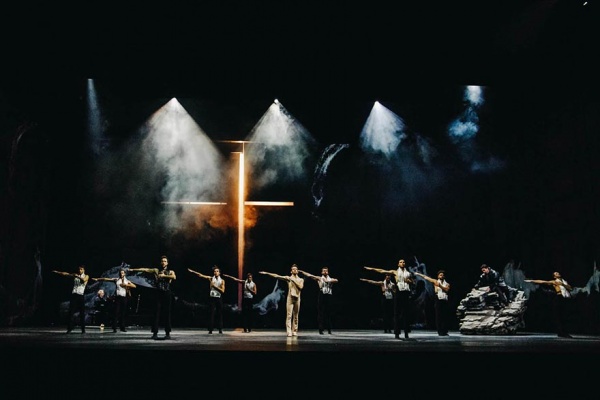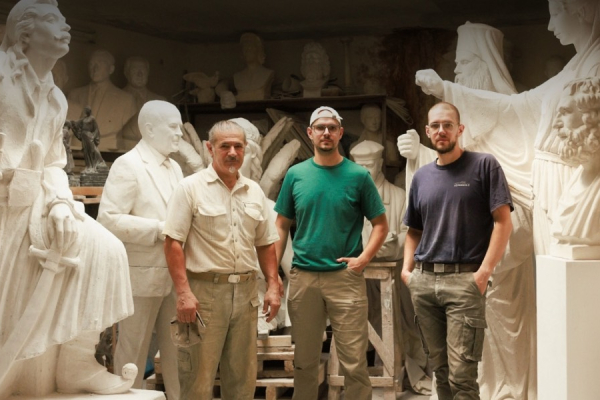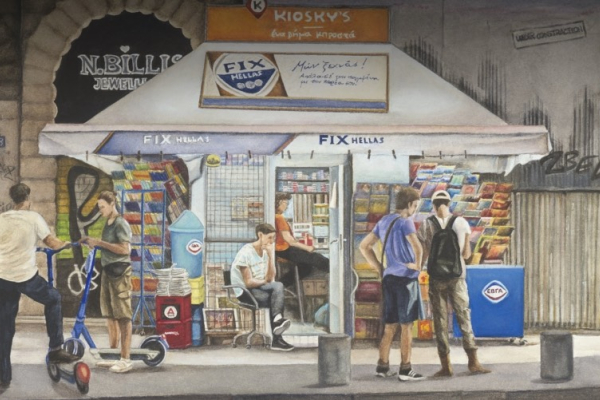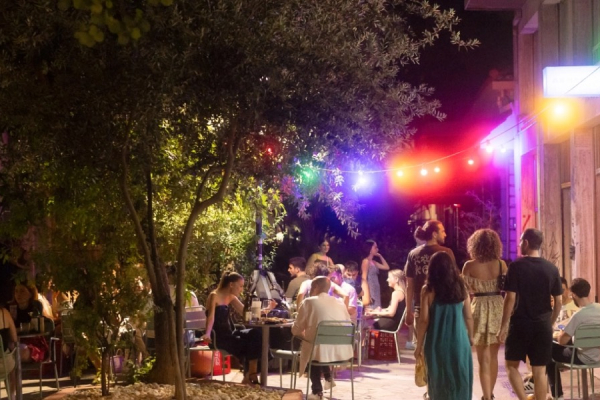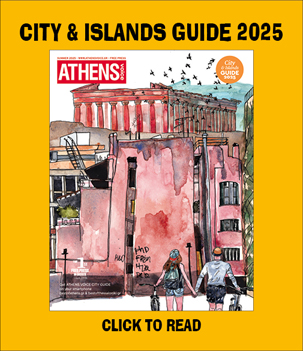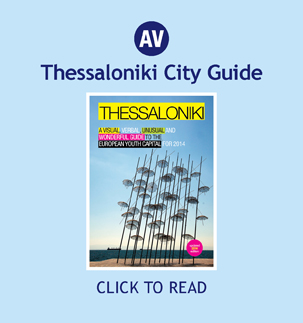Katherine Brubaker
Konstantinos Rigos choreographed four works by Manos Hadjidakis for the Greek National Opera Ballet titled Dance With My Own Shadow. The ballet was performed at The Odeon of Herodes Atticus on the 25th, 27th, and 29th of July. Each piece in the performance has a distinct individuality: their storylines do not relate, their tones do not converge, and their settings and costumes drastically differ. Though these pieces are separate narratives, the one prevailing characteristic was the performance quality. The dancers brought an artistry, energy, and high-level of technique to each piece that captivated the audience throughout the performance.
The Festival’s program at the Odeon of Herodes Atticus is extensive and impressive, but as someone who appreciates ballet I felt inclined to buy tickets for Dance With My Own Shadow. After not attending a live performance for a year, sitting down in this ancient theatre to view these works of art was an almost religious experience.
With a relatively small cast performing, it seemed that each dancer was in all four pieces: Kyklos tou C.N.S (C.N.S Cycle), Kapetan Michalis (Captain Michalis), Katarameno Fidi (The Accursed Serpent), and Tο Chamogelo tis Tzokontas (Gioconda’s Smile).
Kyklos tou C.N.S (C.N.S Cycle) was the first work in the performance. In this piece, “loss and suffering unfold against the backdrop of the rough sea,” according to the festival. To set the stage, a lone rock sat alone while a thrashing ocean was displayed on the wall of the theatre. The corps de ballet dancers, primarily composed of men for this piece, were dressed in simplistic, yet futuristic costumes of black and white. The two male leads had the same costumes, but one was entirely dressed in black and the other in white. There were graceful, heart-wrenching solos, moving duets featuring fluid-like partnering, and group sections that created the impression of the sea: their limbs were the currents, moving together as if they were one wave.
In Kapetan Michalis (Captain Michalis) “the wet, nocturnal, Southern wind ‘falls upon women like a man and upon men like a woman,’” according to the festival. The novel, Kapetan Michalis, deals with the rebellion of the Cretans against the Ottoman Empire in 1889. While the book contextualizes this piece, it was not necessary to enjoy this lively performance. Dancers were adorned in costumes made of gold, black, and red. The stage was set with a bed, candles, and a backdrop of a bearded man - who I can only assume was Kapetan Michalis - occasionally looking down at the dancers. Numerous corp de ballet sections were performed, but there were several male soloists that frequently partnered with two striking female leads: these women were in flowing, black sheer dresses with gold, shining accents. Both dancers were incredibly graceful and demanded attention and power while on stage. The piece was passionate and sometimes sensual, occasionally depicting what seemed to be different affairs throughout the story.
At the close of the piece one of the female leads was having a nightmare. While thrashing in her sleep, a silver structure resembling a tub was rolled on stage. As she woke up from her dream, a hysterical woman in all white climbed from the tub and danced about the stage in a frantic manner that was gripping yet frightening. The woman in white finally fell to the floor, appearing passed out. Our lead comes to her and cradles the woman’s head, thus creating a haunting scene and marking the end of the piece.
In Katarameno Fidi (The Accursed Serpent) the iconic figure of Karagiozis is represented on stage for several dances, epitomising the timelessness of folk art. Karagiozis is the main character of tales narrated in the Turkish and Greek shadow-puppet theatre. This work was incredibly charming, comical, and light-hearted - quite the change of pace from the previous pieces. The images projected on the wall of the theatre were of trees, ships, and serpents, creating a perfect backdrop for the mythological tale. The protagonist of this piece was dressed in a sparkling, multi-colored costume, and corps de ballet members were adorned in equally eye-catching pieces. Female corps dancers wore pointe shoes, floating along the stage with grace and ease. A dancer dressed in an all white unitard moved along the stage with snake-like slithering, so I presume this was The Accursed Serpent. Usually I am not a fan of snakes, but the dancing was so elegant that I’ll allow it.
In Το Chamogelo tis Tzokontas (Gioconda’s Smile) the glamour and fast-paced nature of New York City accentuates loneliness and sorrow. With slick, stylish costumes and luxurious furniture and stage sets, this piece begins with the light air of a Manhattan party. This quickly changes as affairs ensue, altercations arise, and loneliness permeates the stage. For the entirety of the piece, there was a section behind the dancing where a videographer would be filming the face, or other aspect, of a dancer. This live film was projected onto the back of the theatre, displaying a personal look into the emotional turmoil of the piece.
Dance With My Own Shadow is a ballet that encompasses a wide range of intense emotions, and it is astounding that these four, contrasting pieces shared the same stage in one evening. The Greek National Opera Ballet seamlessly navigated these narratives and performed unapologetically, bringing sorrow, lust, and comedy to the stage. The ballet dancing, while not primarily classical, was a mixture of power, elegance, and technical skill that left the audience enthralled and endlessly clapping once the performance came to a close.
Though Dance With My Own Shadow will no longer be performed at the Epidaurus Festival, you can view the rest of the programs by clicking here.



